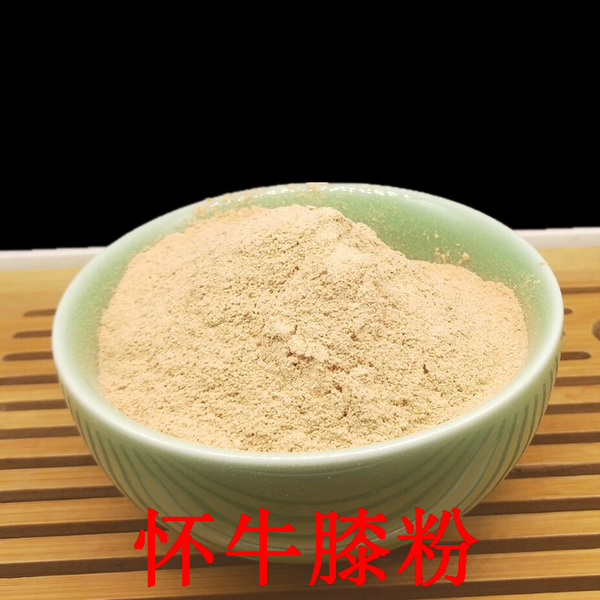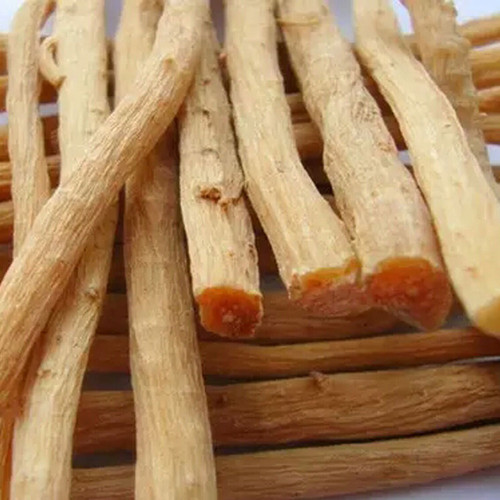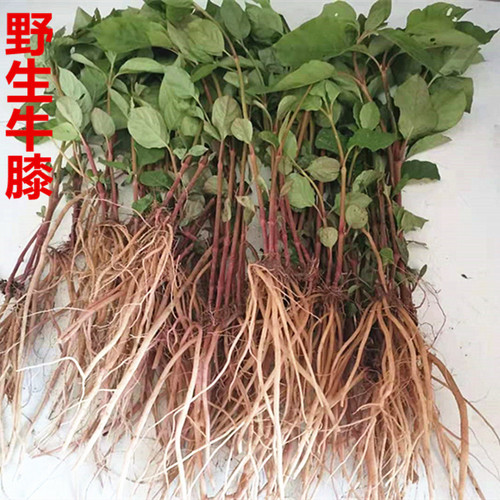Product Overview
Parts used: Dried root
TCM category: Herbs that invigorate the Blood
TCM nature: Neutral
TCM taste(s): Bitter Sour
Meridian affinity: Kidney Liver
Scientific name: Achyranthes bidentata
Other names: Ox knee, Two-toothed achyranthes
Use of achyranthes roots (Niu Xi) in TCM
Please note that you should never self-prescribe TCM ingredients. A TCM ingredient is almost never eaten on its own but as part of a formula containing several ingredients that act together. Please consult a professional TCM practitionner, they will be best able to guide you.
Preparation: Remove impurities, wash, cut into sections and dry.
Dosage: 6 - 9 grams
Main actions according to TCM*: Moves Blood and relieves pain in the raw state. Tonic to the Liver and Kidneys and strengthens the bones and sinews. Reduces Damp-Heat in the Lower Burner. Regulates the flow of reckless Blood caused by either ascendant Liver Yang or Yin Deficient Fire.
Primary conditions or symptoms for which achyranthes roots may be prescribed by TCM doctors*: Amenorrhea Knee pain Irregular menstruation Back pain Hematuria Nosebleed Bloody sputum Headache Toothache
Contraindications*: Should not be used by pregnant women and should be used with caution by those with weak digestion and Spleen Deficiency.
Common TCM formulas in which achyranthes roots are used*:
For joint pains caused by Blood Stagnation combine achyranthes roots with dong quai (Dang Gui), szechuan lovage roots (Chuan Xiong) and red sage roots (Dan Shen).
For stiffness and aching pain in the lower back with difficulty bending at the waist and/or knee pains combine achyranthes roots with mistletoe (Hu Ji Sheng) and pubescent angelica roots (Du Huo).
For migraine headaches combine achyranthes roots with gastrodia rhizomes (Tian Ma) and szechuan lovage roots (Chuan Xiong).
For headaches caused by hyperactive Liver Yang with hypertension combine achyranthes roots with gastrodia rhizomes (Tian Ma), gambir stems and thorns (Gou Teng) and baikal skullcap roots (Huang Qin).
For numbness of the limbs and extremities combine achyranthes roots with szechuan lovage roots (Chuan Xiong), gastrodia rhizomes (Tian Ma) and dong quai (Dang Gui).
For Blood-Heat and Damp-Heat with swelling, dark urine and edema combine achyranthes roots with verbena leaves (Ma Bian Cao), flowering quince (Mu Gua) and plantain seeds (Che Qian Zi).
For Kidney Yin deficiency with pain and weakness of the lower back combine achyranthes roots with dendrobium (Shi Hu) and goji berries (Gou Qi Zi).
Key TCM concepts behind achyranthes roots (Niu Xi)'s properties
In Traditional Chinese Medicine (TCM), achyranthes roots are plants that belong to the 'Herbs that invigorate the Blood' category. Like the name indicates these herbs tend to stimulate the Blood flow. In TCM they're used to help the circulation of Blood in cardiovascular conditions or menstrual irregularities as well as to treat acute pains caused by Blood Stagnation. They can also be used to treat Blood Stasis in the case of certain tumors, cysts and hardened clots.
Furthermore achyranthes roots are plants that are Neutral in nature. This means that achyranthes roots typically don't affect the balance in your body. Balance between Yin and Yang is a key health concept in TCM. Eating too many "Hot" (Yang) ingredients can lead to an imbalance whereby one has a Yang excess. The inverse is true as well: too many "Cold" (Yin) ingredients can lead to a Yin excess. The Neutral nature of achyranthes roots means that you don't have to worry about that!
Achyranthes roots also taste Bitter and Sour. The so-called "five elements" theory in Chinese Medicine states that the taste of TCM ingredients is a key determinant of their action in the body. Bitter ingredients like achyranthes roots tend to have a cleansing action on the body by clearing heat, drying dampness and promoting elimination via urination or bowel movements. On the other hand Sour ingredients help with digestion and restrain abnormal discharges of fluids from the body, such as diarrhea or heavy sweating.
The tastes of ingredients in TCM also determine what organs and meridians they target. As such achyranthes roots are thought to target the Kidney and the Liver. According to TCM, the Kidneys do not only regulate the urinary system but also play a key role in the reproductive system and the growth and aging process of the body. The Liver on the other hand is often referred as the body's "general" because it is in charge of regulating the movements of Qi and body fluids. It also takes a leading role in balancing our emotions.






